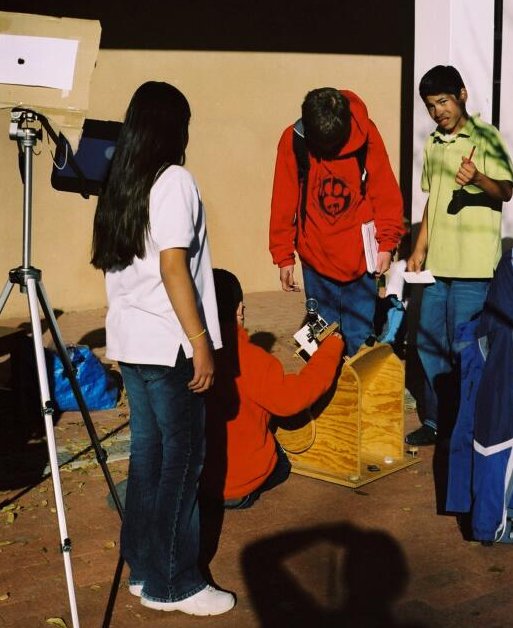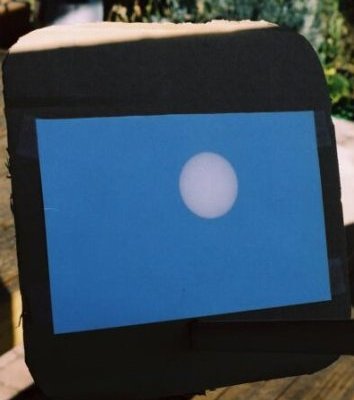 |
 | ||||||||||||
|
|||||||||||||

Why are leaves green?
Also, why do leaves change color in the fall? The links below explain that the green is color of chlorophyll, a molecule that is helps convert water, sunlight and CO2 into sugars, which are then used throughout the plant or tree to build leaves, roots, stems and all other things that make up a plant. But why green? Because that's the color that is not used to power the chemical reactions that enable the plant to grow. It is the red light (and the violets) that are used up. That of course begs the next question: why use red? And that is because that is where most of the power is available in sunlight. Our home star's spectrum peaks in the red, because it's surface temperature is about 6000°C. Had our sun been a blue star ( like Spica), all out trees might well have evolved with purple leaves.
|
|||||||||||||

The transits of Mercury and Venus.
On November 15, 1999 , between 2 and 3 in the afternoon, the planet Mercury passed between the earth and the sun. Since I had the equipment to view sunspots, this was a chance which I couldn't pass up. Even though a transit of Mercury occurs on average every 8 years or so, I had never seen one myself. Since Mercury made only a tiny black speck on the sun's face, right near the edge, I'm sure that many children did not actually see it, but we are near the maximum of the solar cycle, so there were lots and lots of sunspots to be seen, and a good time was had by all. Links:
Links:
|
|||||||||||||
|
|
|||||||||||||

What will really happen on Y2K?
last question of 1999. I told them the standard prediction, that probably there would be some glitches, nothing major etc. I decided to give them a little history of computing. I have a growing collection of obsolete computer recording media which I brought in. Paper tape, punch cards, big and little tapes etc. To set the scale, the deck of cards I had consists of about 400 cards, and the stack is a few inches high. An operating system today (NT 4.0) contains about 40,000,000 lines, which would make a stack 6 miles high. Of course in 1999 this fits on a hard drive the size of a pack of cigarettes. Links:
|
|||||||||||||

What causes earthquakes?
(got to write this up)
USGS recent earthquakes
|
|||||||||||||
| |||||||||||||



